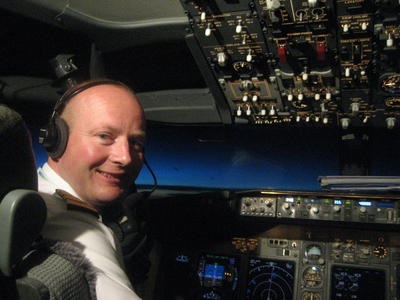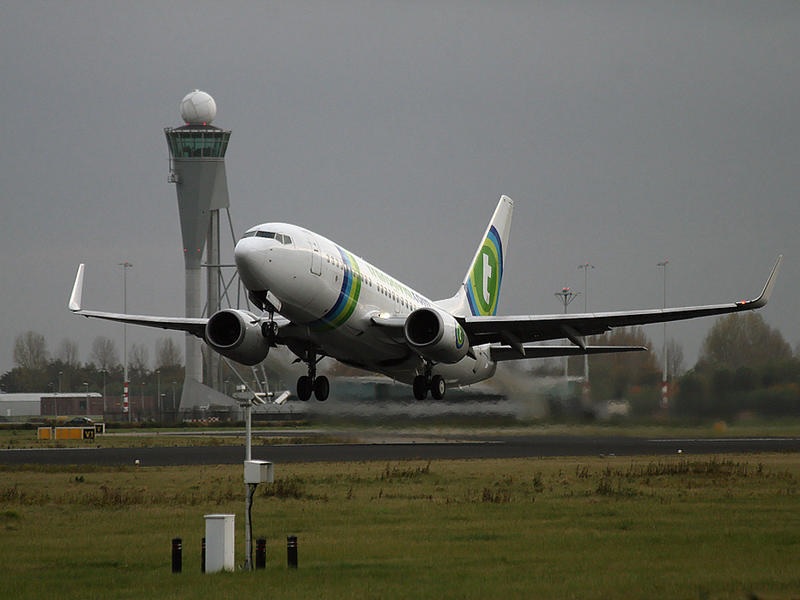People Story

PH9HB/AM: Amateur Radio on the air.
Verbindungen mit /AM Stationen in Flugzeugen gehören zu den Highlights im Amateurfunk. PH9HB Jerry van der Goot ist einer der Aktiven, die uns immer wieder spezielle Momente erleben lassen. Im nachfolgenden Interview gibt Jerry einen interessanten Einblick in den /AM-Betrieb.

Not all Countries allow /AM operation under existing amateur radio regulations. Some, however, do, and that’s how this suffix sometimes happens to be heard on the airwaves. The “flying patrol” of colleagues includes Jerry van der Goot, PH9HB, who is a Boeing 737NG Captain for a Dutch carrier based at Amsterdam-Schipol, and often goes /AM during his flights. The intrigue surrounding this particular method of operating a ham station is multifaceted, and lends itself to a varied perspective: technical, practical and human, certainly enough to make us want to get in touch with Jerry and ask a few questions which consequently received interesting and thought provoking answers. So, fellow passengers, please fasten your belts and get ready for takeoff. We’re about to climb the /AM world.
How (and when) you did become a ham? And a pilot? And, most of all, when did you decide to put the two together and start operating /AM?
At the age of 12, I was a member of the Boy Scouts. It was back in 1977 when I participated for the first time in the JOTA (=Jamboree On The Air). This was my very first encounter with our great hobby and I got infected immediately. I passed my exam 8 years later on April 1st, 1985 (this is not a joke!). My first call was HB9SJL. After I finished my education, I realized that working nine to five is not my thing. In 1987 I went to the US and started my flight training to become a commercial pilot.
Due to education, work and other interests, I was an inactive HAM for over 20 years. When our boys (we have twins) needed less attention, I was looking for a hobby that could be done from home. It was in the summer of 2008 that I applied for a Dutch call sign which was issued on July 21st. Many people ask me about my prefix. Obviously PA is known to most of us, but like in many other countries, the Netherlands has more than that…! Because PA is not “unique”, I chose PH since all aircraft registered in the Netherlands have this immatriculation. Having lived in Switzerland for over 30 years, HB9 had come at the end, thus PH9HB.
Do you still remember your first QSO from above the clouds? On what band, and from which plane was it?
My first QSO from a Boeing 737 was on July 25th, 2008 at 21.38Z over Belgrade on 14.173MHz. We were at 11000 meters above sea level, and I spoke with RV9LM, Alex in west Siberia.
You currently pilot passenger flights, and undoubtedly safety comes first. What conditions do you have to comply with to be allowed to operate /AM?
The Netherlands is one of a few countries that does not forbid aeronautical mobile operation. Obviously work/safety come first. Therefore I only operate the HF radio when duties permit. This is usually at cruising level in smooth conditions and only on longer flights.
Can you briefly describe the equipment you use to work from the plane? What are the main differences with a home rig (and the limits, if any)?
The onboard equipment consists of two Collins HFS900D with 400 W PEP and covers 2-30 MHz in 1 kHz steps. The antenna is mounted on the leading edge of the fin/vertical tail, and is of the shunt-fed-slotted type [note: this link provide more info on this particular type of aerial]. Normally, we use HF to get in touch with air traffic control (ATC) when there is no VHF coverage, i.e. over the Atlantic or over parts of Africa and Asia. The set comes with AM and USB and that’s it! Filters are not made for HAM use, and therefore when many stations call me at the same time I cannot understand much… In those situations I wish more operators would comply with the “Dx Code of Conduct” but unfortunately that seems to be a big dream!

Propagation-wise, what have you noticed in your /AM experience, compared to working HF from the ground? Is high altitude always an added value?
Propagation seems to be very similar to that on the ground. In theory, from 11 km I should be able to work all stations in a radius of approximately 450 km, but that is not always the case.
How many QSOs do you usually manage to do per flight?
On average about 40 contacts per flight, depending on duties, flight time and last but not least: propagation!
What’s the most distant contact you’ve made so far from a plane? And have you ever worked, while flying, another /AM, or a /MM, station?
Furthest contact from the plane must be VK/ZL. On a regular basis I work with Cyril, DF1CHB/am, when we happen to be in the air and on the air at the same time…
How can any ham wanting to work you, stay current regarding your /AM operations?
Anyone registered to my Twitter account gets updates on my /am activities. There are a few frequencies I operate on a regular basis: 14.325 14.165 18.165 and very seldomly USB channel 7.185 MHz not many operators are aware of these dedicated USB-channels these days…
Usually pilots have many “cockpit tales” to tell. Anyone ham radio related ones for you?
When I had my first QSO with Eddy, YU9XMC, I happened to fly over his house. It was just getting dark and he had difficulties to spot us in the air, so I quickly switched on the landing lights…
Is amateur radio popular in the aeronautical community? Are you in touch with other pilots operating /AM? Have you ever thought about creating an association or club for “winged hams”?
There are some pilots working /am but they are getting rare because many airlines get rid of their HF equipment when the routes they fly do not require it.
What are you feeling when working HF at an altitude of 11.000 meters?
It is great to do our hobby during work and even get paid for it…!!!
From your QRZ.com profile it appears you’re also an active operator from the ground. In this case, what are your preferences (in terms of modes, especially)?
I like to use as many languages as possible, therefore I prefer phone. I might try digi modes and CW one day, but being able to use different languages interests me most!
I am a founding member and QSL-manager of our contest team PA6NH. We are radio-active during some major HF contests and the PACC, representing the province of NH (=Noord Holland).
Mit freundlicher Genehmigung http://www.dxcoffee.com
